me & u
Responsive new media installation
Faculty Biennial 2005, UNIVERSITY GALLERIES
Illinois State University, USA
October 28 - December 14, 2005
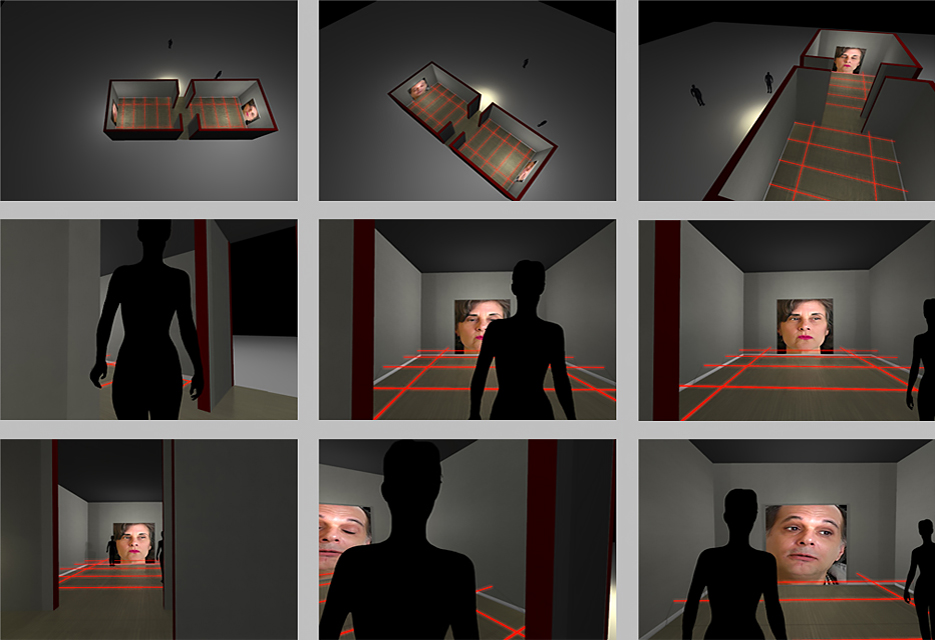
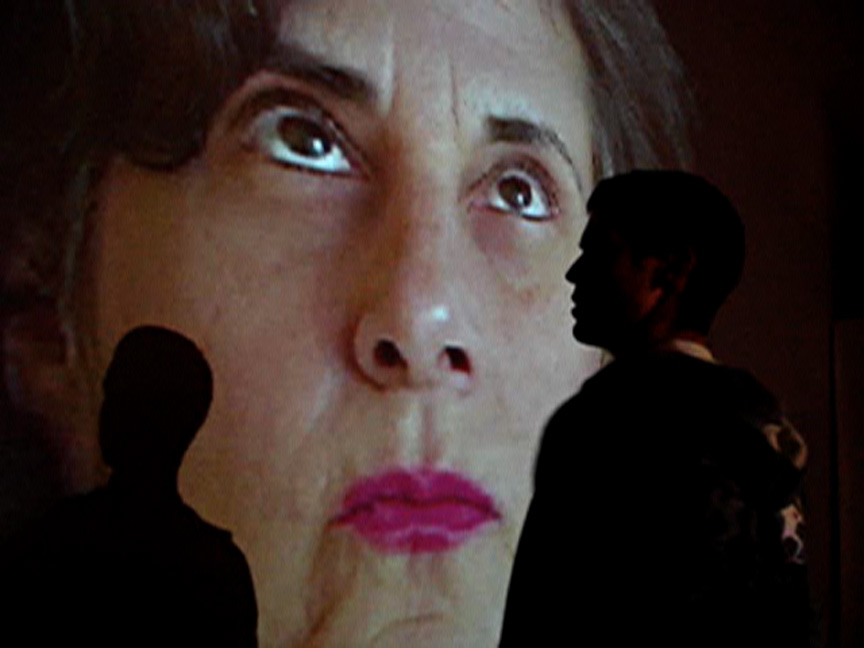
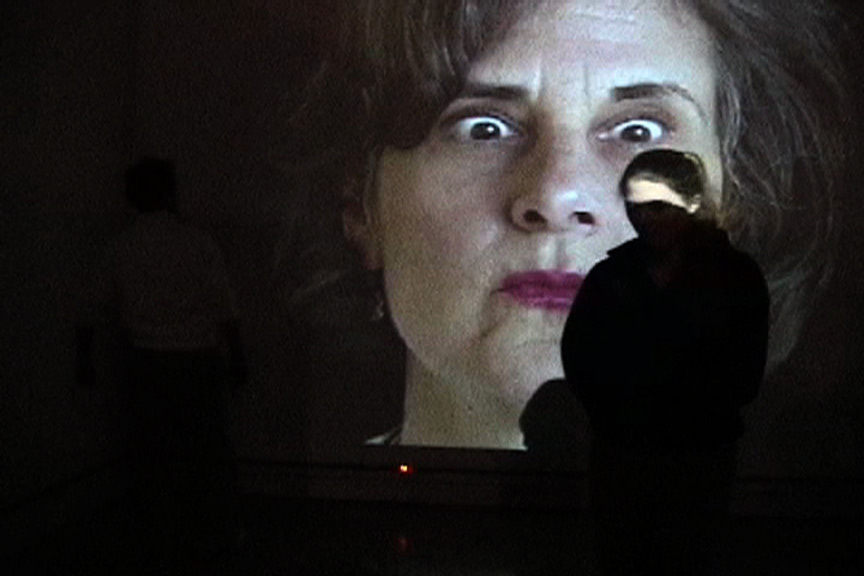
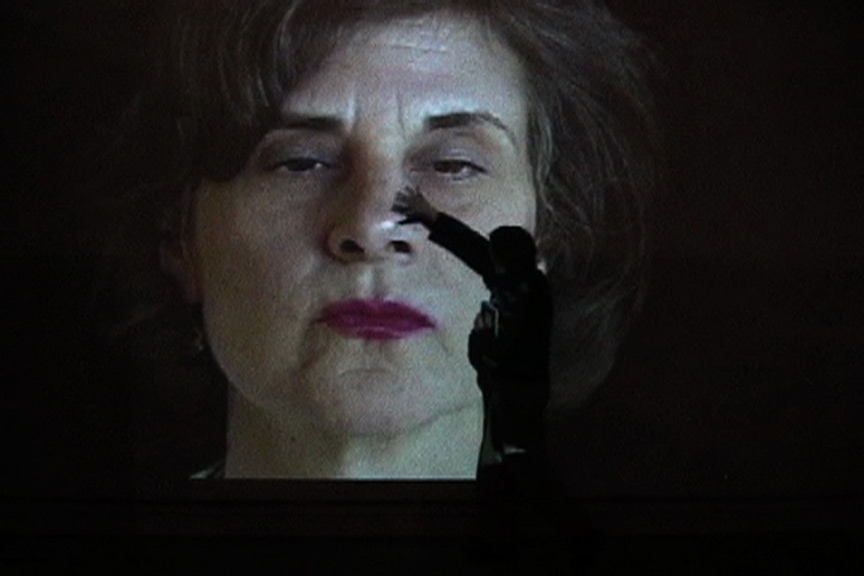
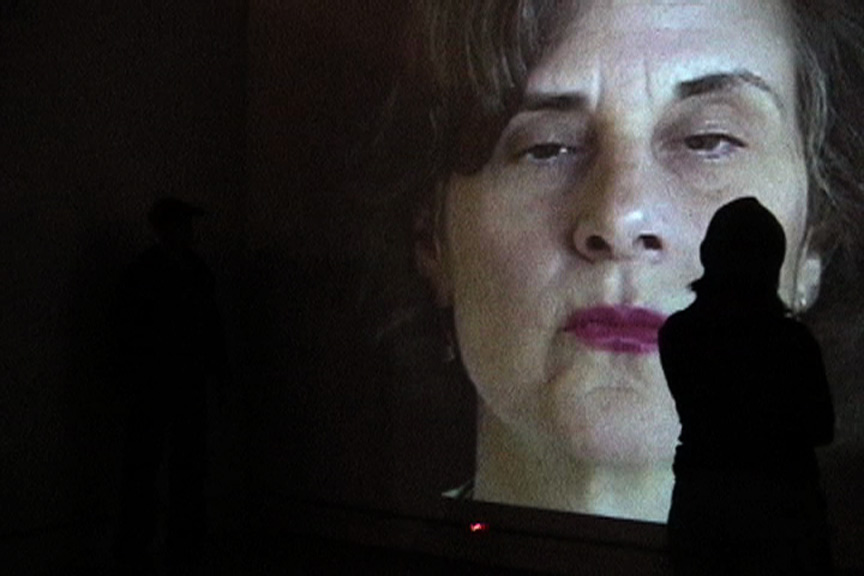
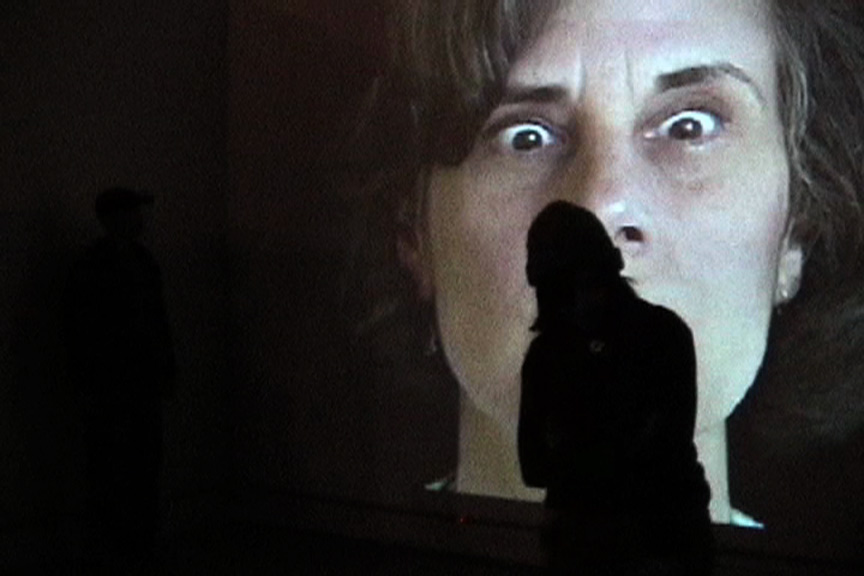
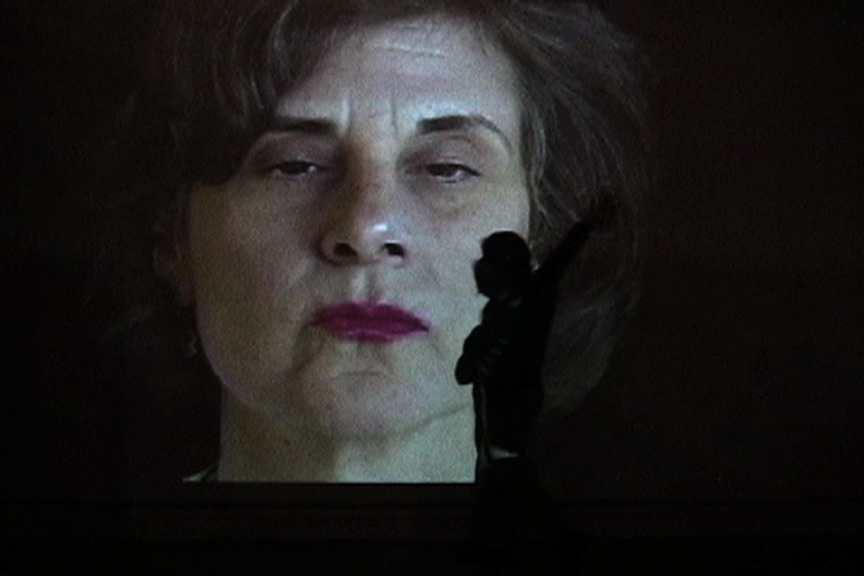
“me and u” is a screen-based installation of an individual’s animated gaze that reacts to the viewer's distance or proximity. The work was developed with the assistance of Chris Tice and funded by a research grant from Illinois State University.
A catalogue of portraits is dialogically defined by the visitor’s position in space. Occupying different zones will influence how the character gazes back, encouraging or discouraging the visitor from getting closer.
The piece involves choreography in space using motion sensors, and software. Content is embodied in data and reconstituted at the interface level where meaning is a product of interaction and shapes thought. New media, in addition to theories of proxemics and intersubjectivity, are used to reference how observer and observed interact with each other, and are inextricably linked in the process of making reality.
Proxemics, a term coined by anthropologist Edward Hall in the 1960’s, is the study of how spatial relationships and territorial boundaries directly influence our daily encounters. This spatial, non-verbal communication between bodies, handles distance in order to send messages during the course of our daily social interactions. Thus, individuals define their attitudes according to the spatial positions they adopt before others. Changing the distance between two people can convey a desire for intimacy, declare lack of interest or fear, and increase or decrease domination.
In addition, we also use our “gaze” in order to maintain a measure of control over such space. This is so, because meeting the other’s glance implies an interlocutor, and this may feel comfortable or uncomfortable. In both cases, the spatial situation created helps us see ourselves through the eyes of the other. According to philosopher Mikhail Bakhtin -for whom all meaning is relational- this is a space of intersubjectivity.
Pat Badani